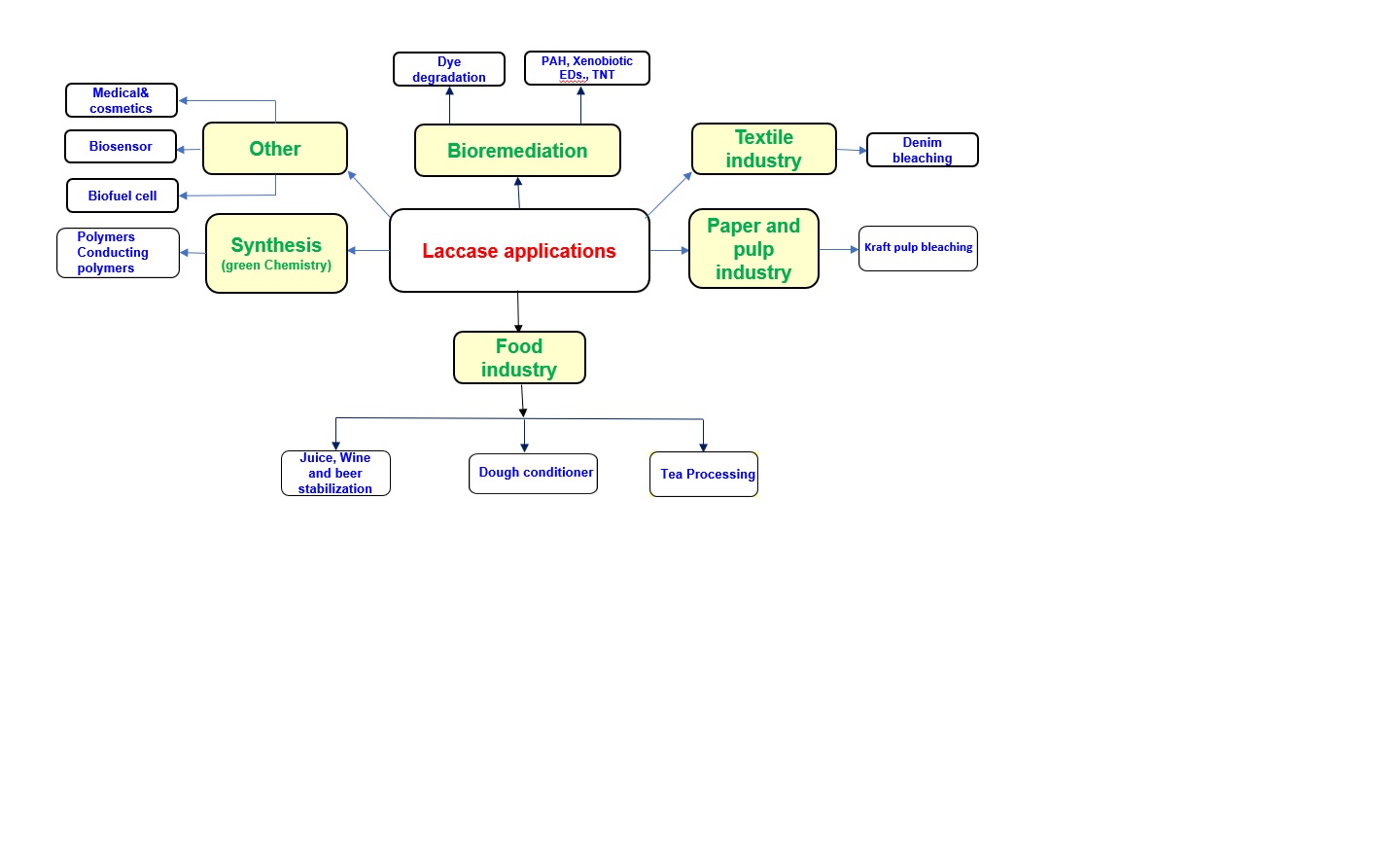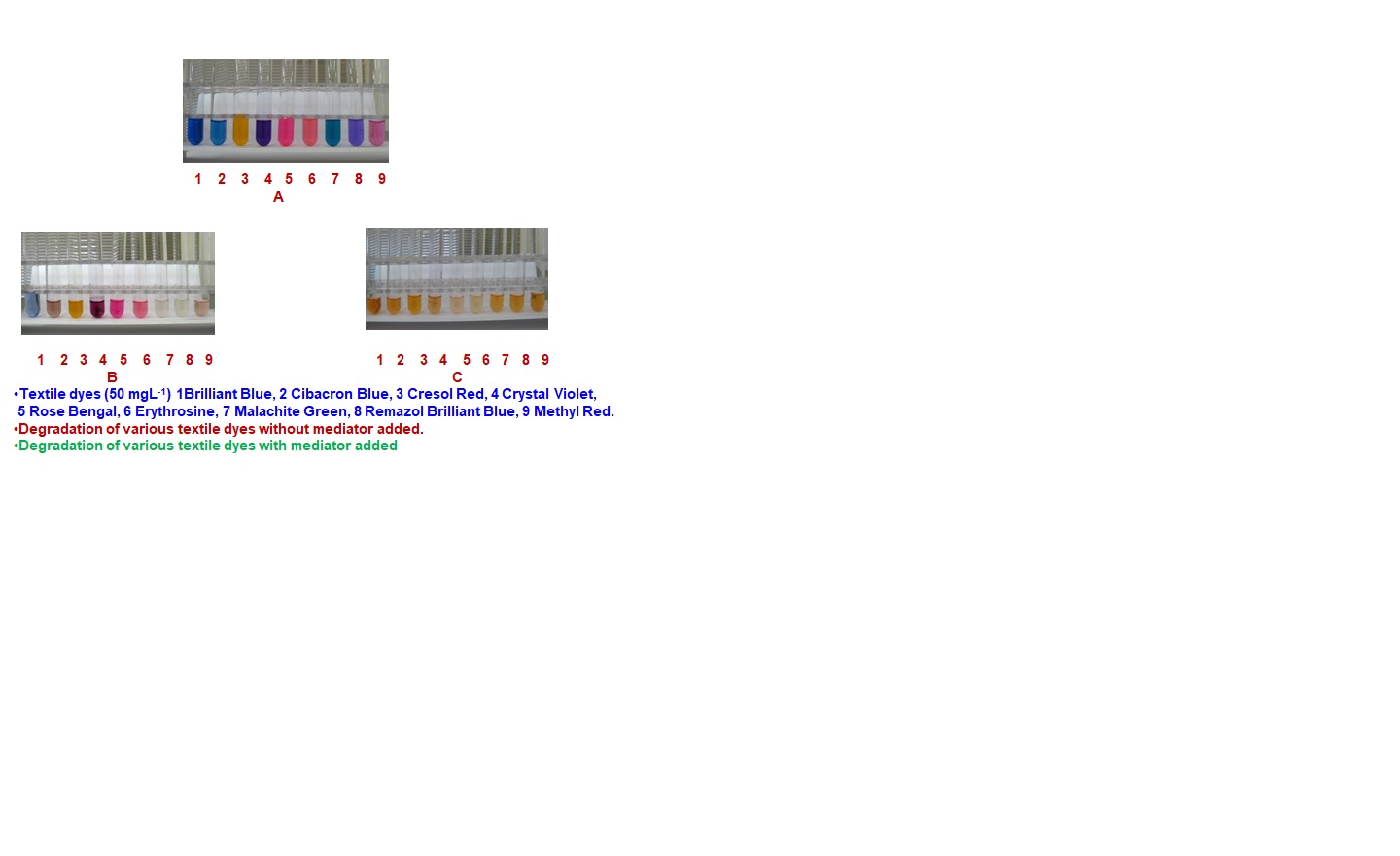Process for laccase enzyme
• Brief outline: Laccase benzenediol:oxygen oxidoreductase EC1.10.3.2 is a polyphenol oxidase containing four copper atoms per protein molecule Blue copper oxidase. Laccase is mainly produced by many fungi belonging to class Ascomycetes Curvularia, Mauginella, and Melanocarpus . and class Basidiomycetes or white rot fungi Agaricus, Cyathus, Lentinus, Phlebia, Panus, Pleurotus and Trametes. High redox potential laccase are exclusively produced by Basidiomycetes. Laccase exhibits broad substrate specificity against mono and di-phenols and their derivatives which can even enhanced further by using some molecules as mediators or enhancers.The broad substrate specificity and the mechanism of oxidative reaction opens up many avenues for application of laccase in the area of Bioremediation and Organic synthesis.
Synthesis of laccase occurs in the stationary phase, hence the rate of enzyme synthesis is low. The synthetic fermentation medium required for laccase production is costly. The duration of laccase fermentation is generally more than 15 days resulting in high energy consumption thereby escalating the process cost.
In CSIR-IMTECH, a novel strain of fungus has been isolated which helps to circumvent some problems associated with laccase production. The fungus dies not require defined medium and can produce laccase in a cheap complex medium. The fungus produces laccase under stationary culture and can save the energy cost. The laccase produced by the novel strain is extracellular and can be purified easily from the mycelia free supernatant. The laccase produced by the novel strain is a high redox potential laccase that can degrade verities if textile dyes including indigo. Relatively low cost mediator such as 1-N-hydroxybenzotriazole 1-HOBT is effective in degradation of various textile dyes.
Consistent production of laccase is possible with easy scale up of the process.
USP: Laccase production process based on a novel strain that produces high redox potential laccase in a consistent way in a simple medium with low energy input.
- Innovator's Name
- Product/Technology Description
Institute of Microbial Technology
NA
- Product Name: Process for laccase enzyme
- Product Title: Laccase Technology
- Description: • Brief outline: Laccase benzenediol:oxygen oxidoreductase EC1.10.3.2 is a polyphenol oxidase containing four copper atoms per protein molecule Blue copper oxidase. Laccase is mainly produced by many fungi belonging to class Ascomycetes Curvularia, Mauginella, and Melanocarpus . and class Basidiomycetes or white rot fungi Agaricus, Cyathus, Lentinus, Phlebia, Panus, Pleurotus and Trametes. High redox potential laccase are exclusively produced by Basidiomycetes. Laccase exhibits broad substrate specificity against mono and di-phenols and their derivatives which can even enhanced further by using some molecules as mediators or enhancers.The broad substrate specificity and the mechanism of oxidative reaction opens up many avenues for application of laccase in the area of Bioremediation and Organic synthesis. Synthesis of laccase occurs in the stationary phase, hence the rate of enzyme synthesis is low. The synthetic fermentation medium required for laccase production is costly. The duration of laccase fermentation is generally more than 15 days resulting in high energy consumption thereby escalating the process cost. In CSIR-IMTECH, a novel strain of fungus has been isolated which helps to circumvent some problems associated with laccase production. The fungus dies not require defined medium and can produce laccase in a cheap complex medium. The fungus produces laccase under stationary culture and can save the energy cost. The laccase produced by the novel strain is extracellular and can be purified easily from the mycelia free supernatant. The laccase produced by the novel strain is a high redox potential laccase that can degrade verities if textile dyes including indigo. Relatively low cost mediator such as 1-N-hydroxybenzotriazole 1-HOBT is effective in degradation of various textile dyes. Consistent production of laccase is possible with easy scale up of the process.
- Unique Selling Point: Laccase production process based on a novel strain that produces high redox potential laccase in a consistent way in a simple medium with low energy input.








